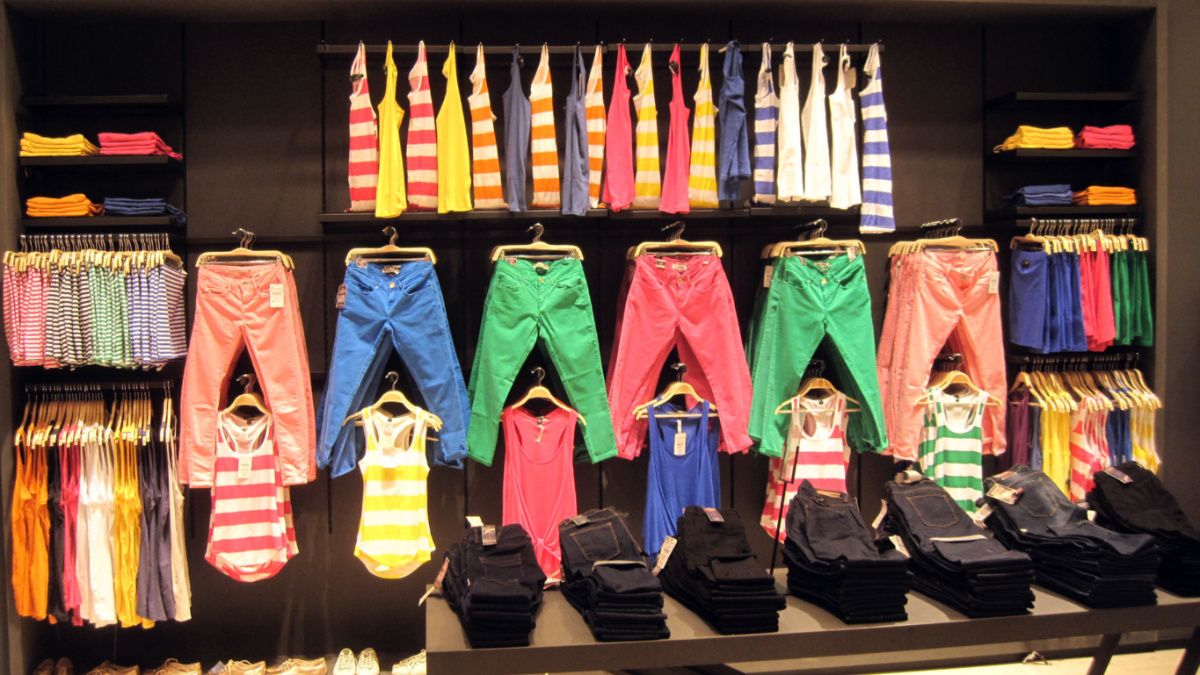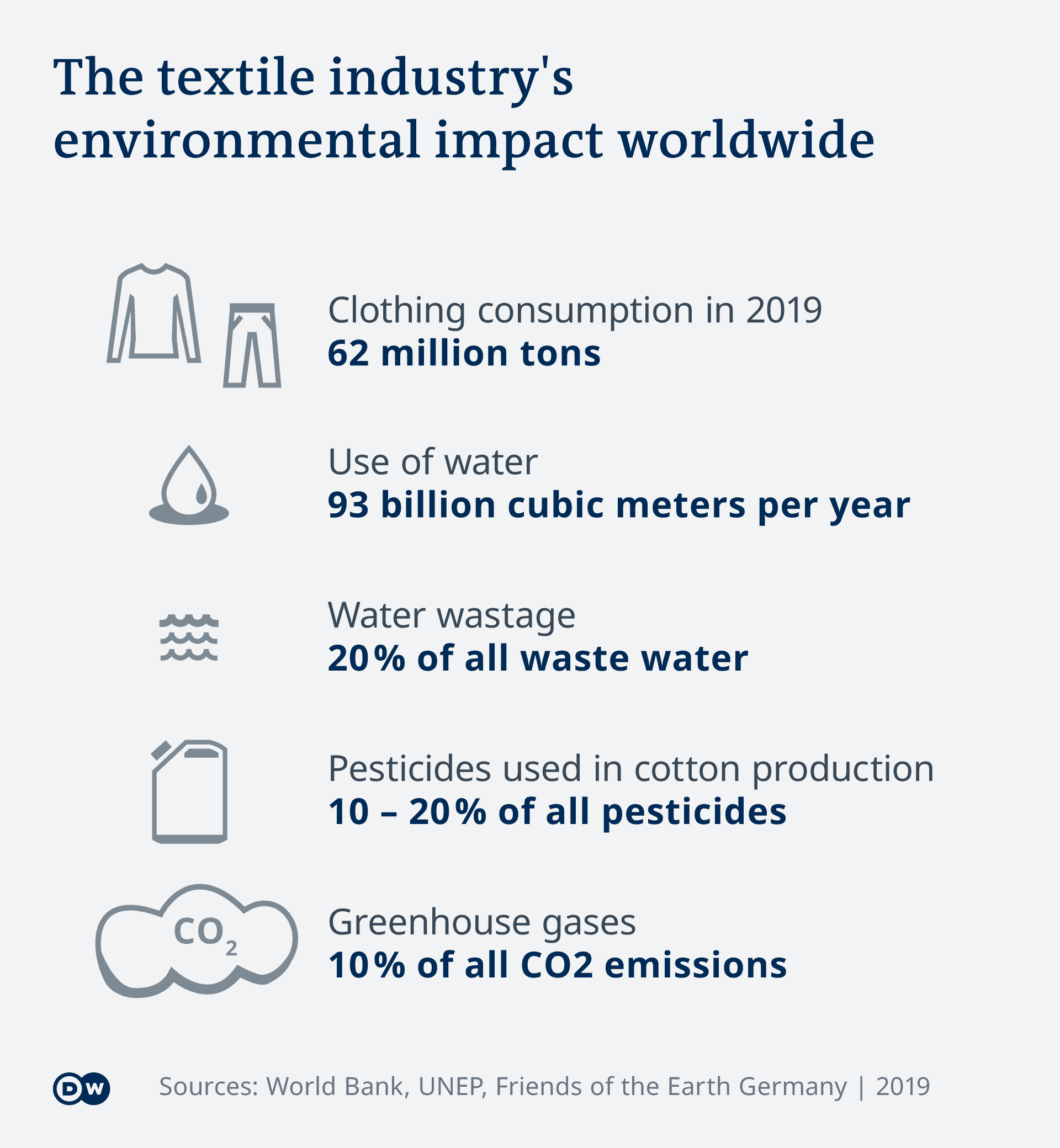

Independent environmental certifications offer a better indicator of a product's eco credentials, including labor conditions for workers involved in production. Flickr / CC by 2.0
By Jeanette Cwienk
This summer’s high street fashions have more in common than styles and colors. From the pink puff-sleeved dream going for just €19.99 ($22.52) at H&M, to Zara’s elegant €12.95 ($14.63) halter-neck dress, clothing stores are alive with cheap organic cotton.
“Sustainable” collections with aspirational own-brand names like C&A’s “Wear the change,” Zara’s “join life” or H&M’s “CONSCIOUS” are offering cheap fashion and a clean environmental conscience. Such, at least, is the message. But is it really that simple?
Going Green, or Just Greenwashing?
“Fashion brands are capitalizing on the fact that consumers are interested in buying fairly and ecologically produced items,” said Katrin Wenz, an expert in agriculture at Friends of the Earth Germany (BUND). “Organic cotton is certainly a step in the right direction, because neither genetic modification nor synthetic pesticides can be used in its production. But these own-brand sustainability labels rarely tell us anything about what happens later on in the production chain.”
Viola Wohlgemuth, a textiles expert at Greenpeace, says companies create their sustainability labels and criteria themselves. “Sustainability is not a protected or specific term, which leaves the door wide open for so-called greenwashing,” she told DW.
Independent Certifications Trustworthier
Both experts emphasize that independent environmental certifications offer a better indicator of a product’s eco credentials, including labor conditions for workers involved in production. Examples include the Global Organic Textile Standard label (GOTS) and the IVN Best certification, which is awarded by the International Association of Natural Textile Industry (IVN).
Heike Hess, head of IVN’s Berlin branch, says using organic cotton alone “is not enough to make fashion really sustainable,” and that producing clothes involves a more involved production chain. After being grown in the fields, cotton fibers have to be separated from their seeds, spun, dyed, printed and sewn to create finished items of clothing.
“Ecological and social standards are important at every stage of production,” Hess said. “That includes minimizing the use of harmful chemicals, managing water usage and waste, limiting CO2 emissions and ensuring human rights, fair wages, protections for workers and much more. Only then can fashion really be called sustainable.”
And that comes at a price. Organic cotton summer dresses certified with the GOTS label usually cost somewhere between €60-100 (about -113).
Water Polluted and Wasted
Textile production often uses harmful chemicals, especially during the wet processing stage when threads are formed, dyed and woven, says Wohlgemuth. According to the UN Environment Program, around 20% of global wastewater is generated during textile dyeing and processing. Communities and ecosystems in textile producing countries across Asia are worst affected.
Since launching its ‘Detox My Fashion’ campaign in 2011, Greenpeace has secured commitments from some 80 global companies in the fashion industry to eliminate hazardous chemicals by the end of this year.
But that alone doesn’t imply sustainability. Growing cotton also requires a huge amount of water and vast areas of land, says Sabine Ferenschild from the Südwind Institute for Economics and Ecumenism in Bonn.
“Organic cotton is only sustainable when grown in rainy regions such as India, and planted in combination with food crops rather than in competition with them,” she said. “But we have seen that cotton farming is increasingly being shifted to desert regions. That can never be sustainable.”

Eco Collections Remain a Market Niche
Ferenschild is critical of major fashion brands’ attempts to go green with their own criteria and labeling for certain products, while the majority of what they’re selling is still produced conventionally.
Germany is pursuing a new approach to green certification with its government-backed ‘Green Button’ label. A company can only use the label if all its products comply with high environmental and labor standards. These standards are not as strict as those demanded by organic certifiers, but experts say the ‘Green Button’ label is a step in the right direction, as it prevents producers offloading responsibility to subcontractors in the production chain.
An ‘Eco’ Dress for €20 (.60): Too Good to Be True?
According to the Bremen Cotton Exchange, organic cotton costs between 10 and 50% more than conventional cotton. Premium fibers boost prices the most; the raw material is not necessarily the most important factor in terms of cost.
Global fashion brands like H&M are able to keep their prices down, even for the products in their “sustainable” ranges, due to the huge volume of items they produce, textiles expert Ferenschild told DW.
H&M uses its own “CONSCIOUS” label for products which contain “at least 50 percent sustainable materials, such as organic cotton and recycled polyester.” It is not clear to consumers what percentage of organic cotton is used in the items labeled as such. In response to DW’s request for clarification, H&M wrote: “Across our entire range, H&M uses 16 percent organic cotton according to our most recent figures.”
According to the Bremen Cotton Exchange, just 0.7 percent of the global cotton harvest in the 2017/18 season was organic.
The Real Problem Is One of Quantity
Even if the big fashion brands wanted to move further towards truly sustainable production, current consumption habits would make that almost impossible. The real problem is that far too many clothes are being produced. According to a 2015 Greenpeace study, there are more than five billion items of clothing in German wardrobes alone.

“A party top is worn on average just 1.7 times,” said Viola Wohlgemuth. “Fast fashion is the SUV of the fashion industry. It will never be sustainable. The fashion industry needs to shift away from production and towards service provision.”
There are already some examples of this: outdoor brands offering to repair products, jeans companies selling second-hand items alongside new, sustainably produced pairs. Even fast-fashion giant H&M’s website now has tips on how to care for and repair for clothes.
But to be successful, this shift would need consumers to get on board. And that, says Katrin Wenz from Friends of the Earth Germany would mean “buying fewer and longer-lasting items, repairing damaged clothing, passing on clothes you no longer wear and choosing to buy second hand.”
Perhaps then, sustainability in fashion could be more than just another trend.
Reposted with permission from Deutsche Welle.
- 5 Tips for a More Earth-Conscious Wardrobe - EcoWatch
- World's Largest Fashion Sustainability Summit to Drive Responsible ...
- Will America's Love for Cheap Clothing Doom the Sustainable ...
- Robert Downey Jr. Announces Sustainable Tech Venture Funds - EcoWatch
- Fast Fashion 101: Everything You Need to Know - EcoWatch

 233k
233k  41k
41k  Subscribe
Subscribe 